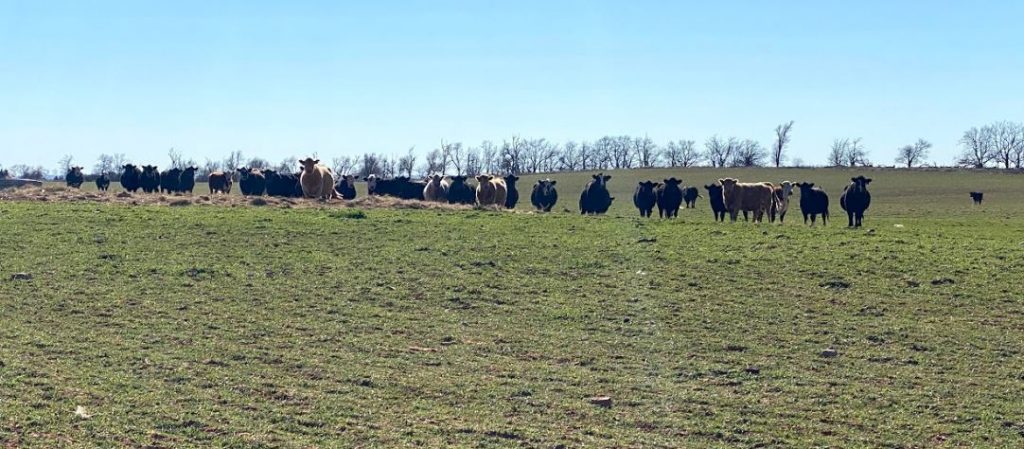
On today’s Cow-Calf Corner, Eric A. DeVuyst, Professor and Rainbolt Chair, Department of Agricultural Economics at Oklahoma State University talks about extended wheat grazing.
With the current above average temperatures, first hollow stem in wheat pastures will likely be here earlier than is usual. So, it’s a good time to look at the benefits and costs of grazing wheat past first hollow stem. Let’s start with the research.
There are two Oklahoma studies that looked at the impact of extended wheat grazing on wheat grain yield. Fieser et al. (2006) looked at grazing stockpiled wheat forage, where Redmon et al. (1996) looked at wheat pasture that was grazed over the winter months. So, when looking at Fieser et al., the results show far less wheat loss from extended grazing. Meaning, if wheat pastures have been grazed over the winter months or are behind normal growth, Redmon et al. results are where we should focus.
In Table 1, wheat yield losses are given as a percentage of wheat yield. Assuming 35 bushel wheat grain yield (without extended grazing), one day of extended grazing is a loss of 1.75 bushels. At $6 per bushel, that’s $10.50 per acre in lost grain. Next, let’s calculate the value of one day of extended stocker grazing. Assuming a stocking rate of 0.64 head per acre, $1.80 value of gain, and 3 pounds per day gain, one day of extended grazing generates $3.46 per acre in added revenue. The difference in returns per acre from one day of extended grazing is -$7.04 per acre. The losses increase quickly as extended grazing continues. By just three days past first hollow stem, extending grazing has a net return (value of stocker gain less wheat grain loss) of -$21.13 per acre. At seven past first hollow stem, the loss is over $45 per acre. This is before charging opportunity cost to the stocker enterprise.
The results are robust to changes in wheat prices and stocker gains. If wheat price is $6 per bushel, the stocker value of gain would need to be $5 per pound to roughly breakeven on extended grazing. Alternatively, at $1.80 value of stocker gain, wheat price would need to be about $2 per bushel to roughly breakeven on extended grazing.
The economics are clear: don’t graze past first hollow stem if you intend harvest wheat grain.
Table 1. Wheat yield grain yield loss from extended grazing*
| Days past first hollow stem | Wheat grain losses |
| 0 | |
| 1 | 5% |
| 2 | 10% |
| 3 | 15% |
| 4 | 20% |
| 5 | 24% |
| 6 | 29% |
| 7 | 33% |
*Derived from Redmon et al. (1996).
References
Fieser, B.G., G.W. Horn, J.T. Edwards, and E.G. Krenzer, Jr. “Timing of Grazing Termination in Dual-Purpose Winter Wheat Enterprises.” The Professional Animal Scientist 22(2006):210-216.
Redmon, L.A., E.G. Krenzer Jr., D.J. Bernardo, and G.W. Horn. “Effect of Wheat Morphological Stage at Grazing Termination on Economic Return.” Agronomy Journal 88(1996):94-97.

















